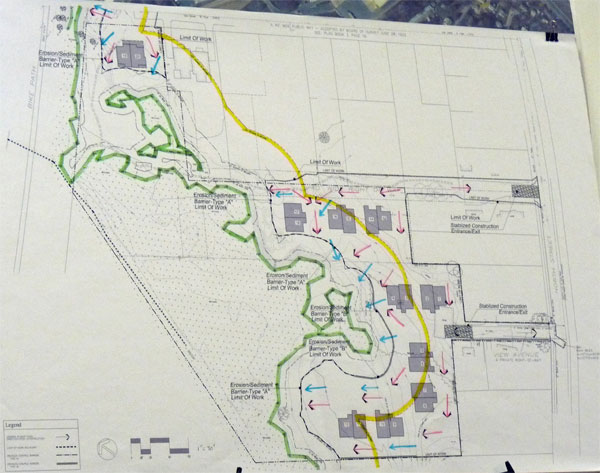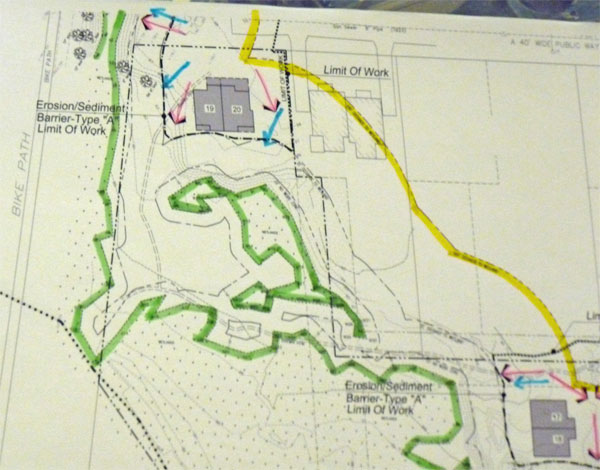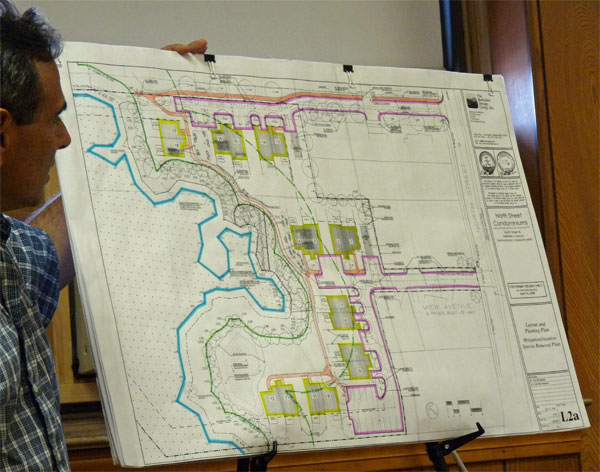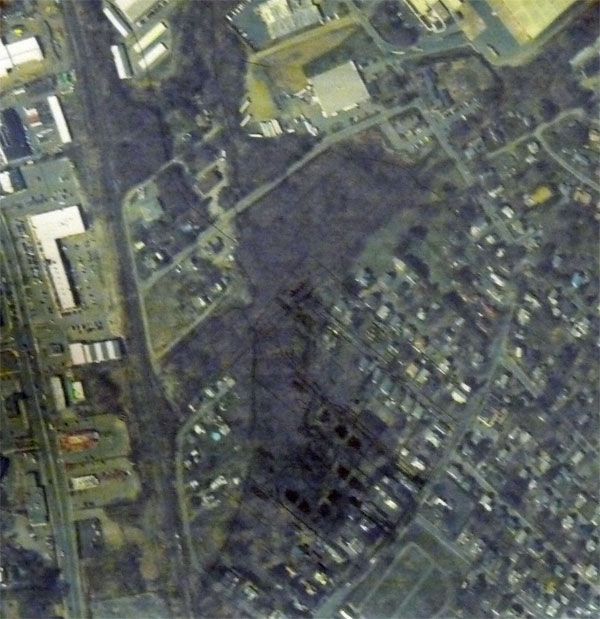Northampton’s Conservation Commission discussed a hydrological review of the Kohl Construction North Street condo proposal at an August 27 hearing. They took no vote but agreed to discuss the proposal again on September 10 at 5:30pm (City Hall Hearing Room, 210 Main Street, 2nd floor). The commissioners desired to refine language in the draft covenants and project conditions, but showed little interest in several issues raised at their March 12 hearing, issues we believe have not been adequately addressed in the current proposal. These include:
- Units 5-12 would be in an area that [now former] Conservation Commissioner Paul Wetzel objects to building on because the ground is so wet
- Wetzel also expressed concerns about how the underground stormwater detention system by Unit 10 would interact with groundwater in and around the wetland
- Unit 18 appears to be slated for the same place as a unit that Conservation Commissioner Downey Meyer objected to previously as too close to the wetland
- The total amount of disturbance inside the 100-foot wetlands buffer zone would remain high; Meyer objected to this on the version of the proposal reviewed on March 12
The commissioners decided to take a firm stand on requiring four-foot diameter boulders to protect most of the 35-foot no-disturb zone around the Millyard Brook wetlands. Doug Kohl had asked for something less obtrusive, but the commissioners believe that nothing less will deter encroachment over the long term, considering past experience. As you can see from the charts, these boulders might be a tight fit considering how close some condos and paths are to the 35-foot line.
Kohl distributed this Suggested Amount for Stormwater Maintenance Escrow Account (PDF, 36KB) at the hearing. We will release a videorecording of the hearing within a few days.
These first charts show the predicted flow of water through Kohl’s proposed development:


This chart shows the proposed roads (pink) and paths (orange):
This picture below outlines the portion of the North Street woods that Kohl says would be impacted by the proposed development. Note the large swathes of impervious surface above and to the left of the woods. These are the Industrial Park and King Street. The latter, as is well known, contains large buildings and parking lots that are unused, underused, or soon to be vacated, making the prospective loss of greenspace in the name of “infill” all the more unfortunate.
See also:
Springfield Republican: “Hydrologists: Housing won’t affect wetlands” (8/29/09)
Douglas A. Kohl wants to build 10 two-unit townhouses on 5.6 acres off North Street and Northern Avenue, about a 15-minute walk from downtown Northampton. The city has encouraged such so-called “in-fill” projects with the view that they will relieve pressure to build new subdivisions in outlying areas and, thus, help preserve open space.
However, Kohl has run into opposition from the North Street Neighborhood Association, which disputes some of the city’s conclusions about in-fill projects and has concerns about the impact of the project on the nearby wetland. The project would also develop one of the few remaining wooded areas in proximity to downtown.
Gazette: “No runoff woes seen” (8/28/09)
While developer Douglas Kohl’s controversial plans for the 20-unit project on 5.6 acres off North Street and south of Northern Avenue will lead to more storm water flowing into the wetlands on the site, the runoff would not mean a rise in the water level of the wetland system and accompanying buffer zones. That’s because water will exit on the opposite side of the wetlands via Millyard Brook.
Photo Essay: Millyard Brook Swells with Water in Winter
Adding impervious surface near streams like these can increase the speed and volume of runoff that flows into them and make them more flood-prone. [Kohl proposes to mitigate the speed of runoff through stormwater management techniques.] In addition, the pollution from developed areas (e.g. salts, oils, herbicides) can harm the vegetation. As the City of Northampton acknowledges, “Problems with nutrient runoff, erosion, siltation, loss of groundwater recharge, poor water quality, vegetation change and harm to wildlife habitat are greatly exacerbated by activities within 100 feet of wetlands.”
Watering-up: Studies of Groundwater Rising After Trees Cut
Video: Conservation Commission Meeting of 1/22/09; Non-Compliance with Wetlands Protection Agreements; Kohl Asked to Revise Condo Proposal Again
Photos Show: Man-Made Lakes and Stormwater Retention Systems Are No Substitute for Natural Wetlands
Carlon Drive: Compensatory Wetland Not Working
Mike Kirby writes:
In Carlon Drive, they simply scooped out a hole in the swamp-bottom, and called it a detention structure. Today it is just a pond, and a stagnant smelly one. It was designed to have a dry forebay, and a shallow main chamber was supposed to have only about 6 inches of water in it. This was supposed to be a compensatory wetland, full of cattails and wildflowers. A rock check dam was supposed to hold back the “first flush” off the parking lots and trap pollutants, and outflow from it was supposed to feed the wet part of the detention pond. Here rain water pouring off the new parking areas and street was supposed to be stored, and discharged safely.
That was the plan. Today if you stand by the pond and look down into it, you’ll see the check dam is now about two feet underwater. You can’t even see where they planted the marshgrass and flowers. The area is under water. Even in a fairly dry summer, the detention pond is only about a foot and a half from the top of the bank. There’s no storage to speak of, no discharge, no filtering. As it is constructed now, grey water from the parking lots and the access street goes directly into the swamp and the Connecticut River.
Special Permit As Issued to Kohl Construction for North Street Condos
Video and Slides: Planning Board Grants Special Permit to Kohl Condos on 6/25/09
Latest Kohl Condo Proposal for North Street: 20 Units as Duplexes
Topographical Map Shows How Kohl Condo Proposal Will Eat Into a Rare Stand of Mature Trees in Downtown
Heat and Rain Increasing in Massachusetts: Implications for Infill and the Proposed Landfill Expansion
This [Hampshire Life] article underscores points we have been raising for some time:
- Development that encroaches close to wetlands, as does the proposed Kohl North Street condo project, is unwise. We need to give our urban wetlands more space, not less, to help them counteract the prospect of increased stormwater flows as well as droughts. Northampton’s recently enacted Wetlands Ordinance, which encourages “Smart Growth” development as close as 10 feet to wetlands in Northampton’s more urban districts, flies in the face of predicted climate trends…
Smart Growth vs. “Smart Growth”